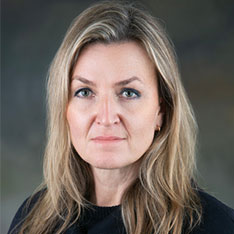The human skull protects the brain, eyes and inner ear. Sometimes, defects develop during pregnancy or in a baby’s initial stages of development outside the body, leading to a misshapen skull.
What are Craniosynostosis and Plagiocephaly?
Craniosynostosis and plagiocephaly are examples of skull defects, also called craniofacial differences. While the two conditions are often associated with each other, there are key distinctions between the two, affecting how they’re treated.
Craniosynostosis
Craniosynostosis is a condition that causes the bones in a baby’s skull to fuse together before the brain fully develops. As the brain continues to grow, the skull can become misshapen as a result. There are multiple types of craniosynostosis, affecting how the skull is shaped. The two most common are sagittal synostosis and metopic craniosynostosis.
Sagittal craniosynostosis causes a baby’s head to be long and narrow, while tetopic craniosynostosis occurs when the forehead has a triangular or pointy shape.
Diagnosing and Treating Craniosynostosis
Craniosynostosis is usually diagnosed shortly after birth when medical providers observe signs of the condition, which may include:
- An abnormally shaped skull
- A bulging “soft spot”
- Facial abnormalities
- Slow or no growth of the skull over time
Treatment for craniosynostosis varies based on the specific defect and its severity, potentially involving a specialized helmet, minimally invasive procedures or other surgical interventions to relieve pressure on the brain and reshape the skull bones.
Plagiocephaly
Plagiocephaly is a condition that causes a baby’s head to have a flat spot or be misshapen. There are two types of plagiocephaly: positional plagiocephaly and congenital plagiocephaly. Of the two, positional plagiocephaly is much more common.
Diagnosing & Treating Plagiocephaly
Positional plagiocephaly is commonly diagnosed in the first weeks and months of a baby’s life. You may notice flattening of your baby’s skull, or your child’s pediatrician may spot signs of the condition during a checkup.
Because most cases of plagiocephaly are mild, it can often be treated with tweaks to your baby’s routine, including positional changes. Your child’s provider may suggest holding your baby more often, changing your baby’s head position during sleep and having more tummy time.
Treatment for plagiocephaly may also include:
- Physical therapy
- Home exercises to strengthen and lengthen the neck muscles
- A specialized helmet to reshape the skull
Key Differences Between Craniosynostosis and Plagiocephaly
There are some key differences between craniosynostosis and plagiocephaly:
- Craniosynostosis causes bones in the skull to fuse together prematurely, while plagiocephaly does not.
- Craniosynostosis can impede skull and brain growth, while plagiocephaly does not.
- Craniosynostosis is a congenital condition that develops during pregnancy, while positional plagiocephaly develops after
- Craniosynostosis often requires surgery, while plagiocephaly can usually be treated using position changes and other noninvasive therapies.
- Craniosynostosis requires treatment to resolve the condition and will worsen over time without it, while plagiocephaly can improve over time but the head may not return to a completely normal shape.
Understanding and Addressing Infant Skull Conditions
If your baby is diagnosed with a craniofacial difference, you can find the advanced care that’s needed at the University Health Cleft & Craniofacial Center. Our team of multidisciplinary providers offers diagnosis and treatment for craniosynostosis and plagiocephaly, including surgical treatment when needed.
Call 210-743-1402 to learn more or schedule an appointment.





